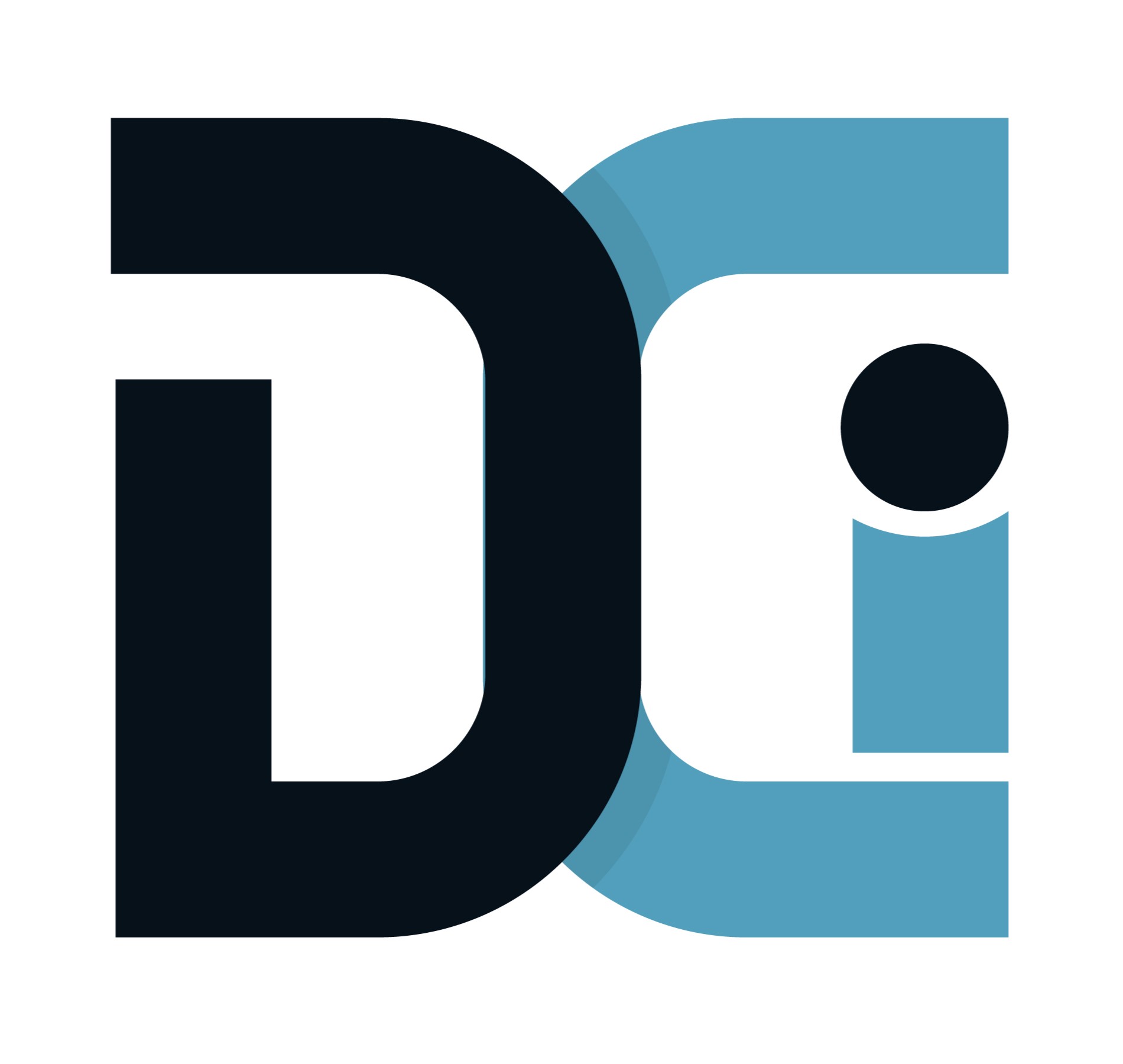The digital marketing landscape between the USA and Russia presents unique challenges when it comes to unpaid invoices. Navigating the complexities of international debt recovery requires a strategic approach and an understanding of the legal frameworks involved. This article delves into the intricacies of the 3-Phase Recovery System designed to efficiently handle unpaid invoices in the digital marketing sector, emphasizing the importance of communication, financial considerations, and informed decision-making throughout the collection lifecycle.
Key Takeaways
- The 3-Phase Recovery System for unpaid invoices includes initial contact and skip-tracing, legal escalation, and final recommendations with potential litigation.
- Effective communication, using multiple channels and persistent attempts, is critical in debt recovery, especially when dealing with international debtors.
- Financial considerations, such as assessing the viability of debt recovery and understanding collection rates and fees, play a significant role in the debt collection process.
- Informed decisions must be made regarding the probability of successful recovery, whether to pursue litigation, and the closure of cases to ensure financial prudence.
- Strategic management of claim portfolios involves tailoring collection strategies to claim size and volume, with special considerations for accounts that require attorney involvement.
Understanding the 3-Phase Recovery System for Unpaid Invoices
Phase One: Initial Contact and Skip-Tracing
In the first phase of our recovery system, we hit the ground running. Within 24 hours of receiving an account, we dispatch a series of letters and initiate comprehensive skip-tracing. Our goal is to unearth the most current financial and contact details of the debtors. We’re relentless in our pursuit, employing a mix of phone calls, emails, text messages, and faxes to establish a connection.
Our collectors are tenacious, making daily attempts to reach out to debtors for the first 30 to 60 days. It’s a full-court press to secure a resolution swiftly.
If our efforts in this initial phase don’t yield results, we’re prepared to escalate. We transition seamlessly to Phase Two, engaging our network of attorneys to apply legal pressure within the debtor’s jurisdiction. Here’s a snapshot of our initial contact strategy:
- First of four letters sent via US Mail
- Skip-tracing to update debtor information
- Persistent contact attempts across multiple channels
Remember, this is just the beginning. We’re setting the stage for a robust recovery process, ensuring every avenue is explored before moving to the next phase.
Phase Two: Legal Escalation and Attorney Involvement
When we escalate to Phase Two, our approach intensifies. We’ve exhausted amicable solutions and now, it’s time for legal muscle. Our affiliated attorneys step in, wielding the power of the law to recover what’s owed.
- The attorney sends a series of stern letters on law firm letterhead, demanding payment.
- Concurrently, they initiate persistent phone calls, adding pressure.
If these efforts don’t yield results, we’re transparent about the challenges. We’ll send you a detailed letter outlining the situation and our expert recommendations for the next steps.
We’re committed to clear communication and strategic action, ensuring you’re informed at every turn.
Remember, the goal is recovery, not endless pursuit. We weigh the odds, considering the debtor’s assets and the likelihood of successful collection. If the outlook is grim, we may advise against throwing good money after bad. But if there’s a solid chance, we’ll discuss the potential for litigation, including the upfront costs involved.
Phase Three: Final Recommendations and Litigation Options
At this juncture, we’re faced with a critical decision. Our recommendation hinges on the debtor’s asset investigation and the likelihood of recovery. If prospects are dim, we advise case closure, at no cost to you. Conversely, should litigation seem viable, you’re at a crossroads.
Choose to forgo legal action, and you may either withdraw the claim or let us persist with conventional collection efforts—calls, emails, faxes—with no fees incurred. Opt for litigation, and upfront legal costs await, typically between $600 to $700, based on the debtor’s location. These cover court costs, filing fees, and the pursuit of all owed monies.
Should litigation not yield results, rest assured, you owe us nothing further. Our commitment is to a cost-effective resolution, with your financial interests at heart.
Our fee structure is straightforward and competitive, reflecting the age and size of claims, as well as attorney involvement. Here’s a snapshot:
- Accounts under 1 year: 30% (1-9 claims) or 27% (10+ claims) of amount collected.
- Accounts over 1 year: 40% (1-9 claims) or 35% (10+ claims) of amount collected.
- Accounts under $1000.00: 50% of amount collected, regardless of claim count.
- Accounts placed with an attorney: 50% of amount collected, irrespective of other factors.
The Role of Communication in Debt Recovery
Utilizing Multiple Channels to Reach Debtors
In our quest to secure payments, we leave no stone unturned. We employ a multi-channel approach to ensure that our messages reach debtors, wherever they may be. This includes traditional methods like phone calls and letters, as well as digital avenues such as emails and text messages. Our persistence pays off, with daily attempts made during the critical first 30 to 60 days.
We understand the importance of adaptability in communication strategies. By casting a wide net, we increase the likelihood of establishing contact and resolving unpaid invoices.
Our approach is data-driven, leveraging skip-tracing to gather the best financial and contact information. This ensures that our efforts are not just persistent, but also targeted and efficient. Below is a breakdown of our initial contact strategy:
- First 24 hours: Dispatch of the first letter and comprehensive skip-tracing.
- Daily contact: Persistent attempts through calls, emails, text messages, and faxes.
- 30 to 60 days: Intensive follow-up period before considering legal escalation.
By utilizing multiple channels, we address non-payment issues head-on, ensuring that DCI offers B2B accounts receivable protection across various sectors, including USA-Russia trade and beyond.
The Importance of Persistent Contact Attempts
We know that persistence is key in the debt recovery process. Daily attempts to reach debtors during the initial phase are crucial. We employ a variety of methods: phone calls, emails, text messages, and faxes, ensuring no stone is left unturned.
Our approach is systematic and relentless. Here’s a snapshot of our contact strategy:
- Within the first 24 hours: dispatch of the first letter.
- First 30 to 60 days: daily contact attempts.
- Escalation: if no resolution, we proceed to legal involvement.
Persistence pays off. It’s not just about making contact; it’s about creating a sense of urgency for the debtor. We’ve seen time and again that consistent follow-up increases the likelihood of securing overdue payments, especially in sectors like consumer electronics, tourism services, environmental tech, and telecommunications.
We stand firm in our belief that a persistent approach is the backbone of successful debt recovery. It’s not merely a tactic; it’s a strategic necessity.
Our experience across various industries, including the USA-Russia digital marketing sector, has taught us that persistence is not just beneficial—it’s essential. We’ve addressed non-payment issues across the board, from securing overdue payments in environmental tech trade to ensuring timely payments for telecommunications equipment exports.
Navigating Legal Communication: Attorney Letters and Calls
When we step into the legal arena, our communication strategy sharpens. Attorney letters and calls become pivotal tools in our arsenal. These formal notices serve as a clear signal to debtors that the matter has escalated.
- The first attorney letter is dispatched, marking a significant shift in tone.
- Follow-up calls reinforce the urgency and seriousness of the situation.
- Persistent attempts are made to engage the debtor in resolving the debt.
We ensure that every communication is meticulously documented, creating an indisputable trail of our efforts to recover what’s owed.
Should these efforts not yield the desired results, we’re prepared to advise on the next steps. Our experience tells us that a well-timed legal notice can be the catalyst for settlement, but we also know when it’s time to consider more assertive action.
Financial Considerations in the Debt Collection Process
Assessing the Viability of Debt Recovery
Before we dive into recovery efforts, we must assess the viability of each debt. Not all unpaid invoices are worth the chase. We consider the age of the account, the amount owed, and the debtor’s financial status.
Age of the account is a critical factor. Fresh debts are more likely to be recovered than those aging beyond a year. Here’s a quick breakdown:
- Accounts under 1 year: Higher recovery probability
- Accounts over 1 year: Lower recovery probability
The amount owed also influences our approach. Smaller debts often incur higher collection rates, making recovery less economical. For debts under $1000, the collection rate can be as steep as 50%.
We must weigh the cost against the potential gain. If the numbers don’t add up, it’s a no-go.
Lastly, we look at the debtor’s ability to pay. Skip-tracing and investigations provide insights into the debtor’s financial health. Without a positive outlook here, the pursuit may be futile. Our goal is to make informed decisions that align with our clients’ best interests.
Understanding Collection Rates and Fees
We’re in the business of reclaiming what’s owed to you, but it’s crucial to grasp the costs involved. Collection rates vary, and they’re pivotal in determining the course of action. For instance, collection rates for recovering overdue payments from Russian importers through legal action range from 27% to 50% based on claims submitted and account age. This is a key factor we consider when advising on the viability of pursuing a debt.
Fees also play a significant role. They can include court costs, filing fees, and attorney rates, which typically range from $600 to $700. These upfront costs are necessary for litigation and are separate from the collection rates. It’s a balance of potential gain against the expenses incurred.
Here’s a quick breakdown of our rates:
- Accounts under 1 year: 27% to 30% of the amount collected.
- Accounts over 1 year: 35% to 40% of the amount collected.
- Accounts under $1000.00: 40% to 50% of the amount collected.
- Accounts placed with an attorney: 50% of the amount collected.
Remember, these rates are competitive and tailored to the specifics of your claim. We’re transparent about the costs so you can make informed decisions.
The Cost of Legal Action and Its Implications
When we decide to escalate to litigation, we’re faced with a stark reality: legal costs can be substantial. These upfront expenses, including court costs and filing fees, typically range from $600 to $700. It’s a pivotal moment in the debt recovery process, where we must weigh the potential return against the financial outlay.
The decision to litigate is not taken lightly. We consider the debtor’s assets, the age of the account, and the likelihood of successful recovery. If we conclude that the chances are slim, we may recommend closing the case, leaving you owing nothing.
However, if we proceed with legal action, the costs incurred are an investment towards recovering the full amount owed. It’s essential to understand that collection rates vary, influenced by factors such as the age of the account and whether it’s placed with an attorney. Here’s a quick breakdown of our collection rates:
- Accounts under 1 year: 30% of the amount collected.
- Accounts over 1 year: 40% of the amount collected.
- Accounts under $1000: 50% of the amount collected.
- Accounts placed with an attorney: 50% of the amount collected.
Closure options include either owing nothing or proceeding with legal action, each with its own set of financial implications. The decision is critical, and we’re here to guide you through it.
Making Informed Decisions in the Collection Lifecycle
Evaluating the Probability of Successful Recovery
When we reach the crossroads of debt recovery, it’s crucial to gauge the likelihood of success. We must analyze the debtor’s financial landscape and the age of the account. Our experience tells us that fresher debts are more likely to be recovered. Here’s a snapshot of our recovery rates:
- Accounts under 1 year: Higher recovery probability
- Accounts over 1 year: Lower recovery probability
- Small debts (under $1000): Recovery efforts may not be cost-effective
In Phase Two, we escalate to legal action if necessary. Our affiliated attorneys step in, demanding payment and persistently attempting contact. If unresolved, we provide further recommendations.
Deciding on litigation is a pivotal moment. We consider the debtor’s assets, the costs involved, and the potential return. If the odds are not in our favor, we may advise against it to avoid unnecessary expenses. Remember, we’re in this together, and our goal is to maximize your recovery while minimizing your costs.
Deciding Whether to Pursue Litigation
When we reach the crossroads of litigation, the decision isn’t taken lightly. We must weigh the potential gains against the upfront costs and risks. Litigation can be a powerful tool, but it’s not always the right one. Here’s what we consider:
- The strength of our case and the debtor’s ability to pay.
- The estimated legal fees versus the size of the unpaid invoice.
- The impact of a prolonged legal battle on our resources and reputation.
We’re in this together, and our goal is to make a decision that aligns with our best interests, both financially and strategically.
If we opt for litigation, we’re looking at upfront costs ranging from $600 to $700, typically. These are necessary to cover court costs and filing fees. Remember, these costs are an investment towards recovering what’s owed to us. Here’s a quick breakdown of potential collection rates:
| Claims Submitted | Accounts < 1 Year | Accounts > 1 Year | Accounts < $1000 | Accounts with Attorney |
|---|---|---|---|---|
| 1-9 | 30% | 40% | 50% | 50% |
| 10+ | 27% | 35% | 40% | 50% |
The decision to litigate is not just about the numbers; it’s about our commitment to uphold the value of our services and contracts. We’ll proceed with caution, armed with the best information and a clear understanding of the implications.
Closure of Cases and Financial Obligations
When we reach the end of the line, our focus shifts to the closure of cases and settling financial obligations. Decisions made here are crucial; they reflect our commitment to your financial recovery while acknowledging the practical limits of collection efforts.
In the event of unsuccessful recovery, despite persistent attempts in Phase Two, we proceed to Phase Three with clear recommendations. If litigation is deemed unviable, we advise on case closure, absolving you of further fees to our firm or affiliated attorneys.
Our rates for collection are tailored to the claim’s age, size, and whether it’s been placed with an attorney. We ensure transparency in our fee structure, so you’re never in the dark.
Should you opt for litigation, be prepared for upfront legal costs. These typically range from $600 to $700, depending on jurisdiction. If litigation doesn’t pan out, the case is closed—no additional fees incurred.
Here’s a quick glance at our rate structure:
| Claims Submitted | Accounts < 1 Year | Accounts > 1 Year | Accounts < $1000 | Placed with Attorney |
|---|---|---|---|---|
| 1-9 | 30% | 40% | 50% | 50% |
| 10+ | 27% | 35% | 40% | 50% |
Strategic Approaches to Managing Small and Large Claim Portfolios
Differential Rates for Varied Claim Sizes
In the complex terrain of debt recovery, we understand that not all claims are created equal. Our pricing structure is designed to reflect the diversity of claim sizes, ensuring that our clients receive the most cost-effective service for their specific needs. Smaller claims, particularly those under $1000, often require a different strategic approach compared to larger debts.
For these smaller accounts, we offer contingency-based litigation, with recommendations that include asset investigation and a thorough cost assessment. It’s crucial to weigh the potential recovery against the upfront legal fees, which typically range from $600 to $700 for filing lawsuits.
Our goal is to maximize your recovery while minimizing your expenses.
Here’s a quick breakdown of our rates based on claim size:
- Accounts under 1 year in age: 30% of the amount collected.
- Accounts over 1 year in age: 40% of the amount collected.
- Accounts under $1000: 50% of the amount collected.
- Accounts placed with an attorney: 50% of the amount collected.
For larger volumes of claims, we offer reduced rates to reflect the economies of scale. This tiered pricing ensures that your return on investment remains optimal, regardless of the claim size or age.
Tailoring Collection Strategies to Claim Volume
We understand that not all claims are created equal. Our strategies adapt to the volume of claims, ensuring efficiency and effectiveness. For smaller claim volumes, we focus on personalized recovery efforts, while larger volumes necessitate a more systematic approach.
Claim volume directly impacts our collection rates. We’ve observed that debt collection rates decrease for 10+ claims, balancing risk and reward. Here’s a quick breakdown:
| Claims Volume | Collection Rate |
|---|---|
| 1-9 claims | 30%-50% |
| 10+ claims | 27%-40% |
Legal costs for litigation also play a crucial role. They typically range from $600 to $700, depending on the debtor’s jurisdiction. It’s essential to weigh these costs against the potential recovery.
We prioritize our clients’ interests, adjusting our tactics to the claim volume and ensuring the best possible outcome.
Remember, rates vary based on claim volume and age. We’re here to guide you through these nuances to maximize your returns.
Special Considerations for Accounts Placed with Attorneys
When we place accounts with attorneys, the stakes are higher, and the approach is more nuanced. We must balance persistence with prudence, ensuring that every action taken is legally sound and strategically targeted. The cost implications are significant; accounts placed with attorneys incur a 50% collection rate, reflecting the complexity and effort involved.
Communication with the debtor becomes more formal and infrequent, yet each interaction carries greater weight. We rely on the expertise of our affiliated attorneys to navigate this delicate phase, where the right words can mean the difference between settlement and litigation.
- Initial attorney contact is made swiftly, demanding payment with the authority of legal letterhead.
- Subsequent contacts may include strategic calls and letters, each step calculated to increase pressure.
- If recovery appears unlikely, we recommend case closure, sparing you further expense.
In this final phase, we’re not just chasing payments; we’re weighing the viability of recovery against the costs of continued pursuit. It’s a careful calculation, one that we don’t take lightly.
Our rates for accounts placed with attorneys remain consistent regardless of claim size or age, ensuring transparency and predictability in your financial planning.
Navigating the complexities of debt collection requires a strategic approach, whether you’re managing small or large claim portfolios. At Debt Collectors International, we specialize in providing tailored solutions that cater to the unique needs of your industry. Our experienced team is equipped to handle every aspect of debt recovery, ensuring maximum results with minimum hassle. Don’t let outstanding debts impede your business’s success. Visit our website to learn more about our services and take the first step towards reclaiming what’s yours.
Frequently Asked Questions
What are the phases involved in the 3-Phase Recovery System for unpaid invoices?
The 3-Phase Recovery System includes: Phase One – Initial contact, skip-tracing, and communication attempts; Phase Two – Legal escalation, attorney involvement, and demand letters; Phase Three – Final recommendations, which may include litigation or case closure.
What actions are taken within 24 hours of placing an account for debt recovery?
Within 24 hours, a series of letters are sent to the debtor, skip-tracing is conducted to gather financial and contact information, and collectors begin daily attempts to contact the debtor using various communication methods.
What happens if the debtor does not respond to initial collection attempts?
If the debtor does not respond to initial collection attempts during Phase One, the case is escalated to Phase Two, where it is forwarded to an affiliated attorney within the debtor’s jurisdiction for further legal action.
What are the possible outcomes after Phase Three of the debt recovery process?
After Phase Three, the outcomes can either be a recommendation to close the case if recovery is unlikely, or to proceed with litigation if there is a possibility of recovery. If litigation is pursued, upfront legal costs will be required.
How are collection rates determined for unpaid invoices?
Collection rates vary based on the number of claims submitted, the age of the accounts, the amount owed, and whether the account is placed with an attorney. Rates range from 27% to 50% of the amount collected, depending on these factors.
What are the upfront legal costs if litigation is recommended, and what happens if the litigation fails?
The upfront legal costs for litigation typically range from $600 to $700, covering court costs, filing fees, etc. If litigation attempts fail, the case will be closed, and you will owe nothing to the firm or the affiliated attorney.





